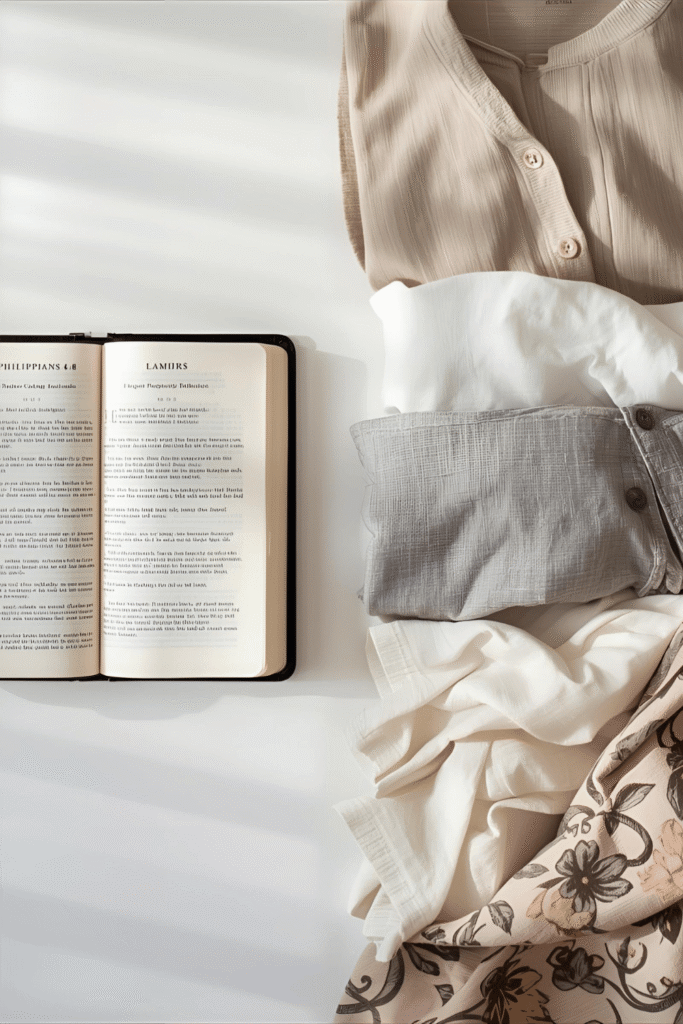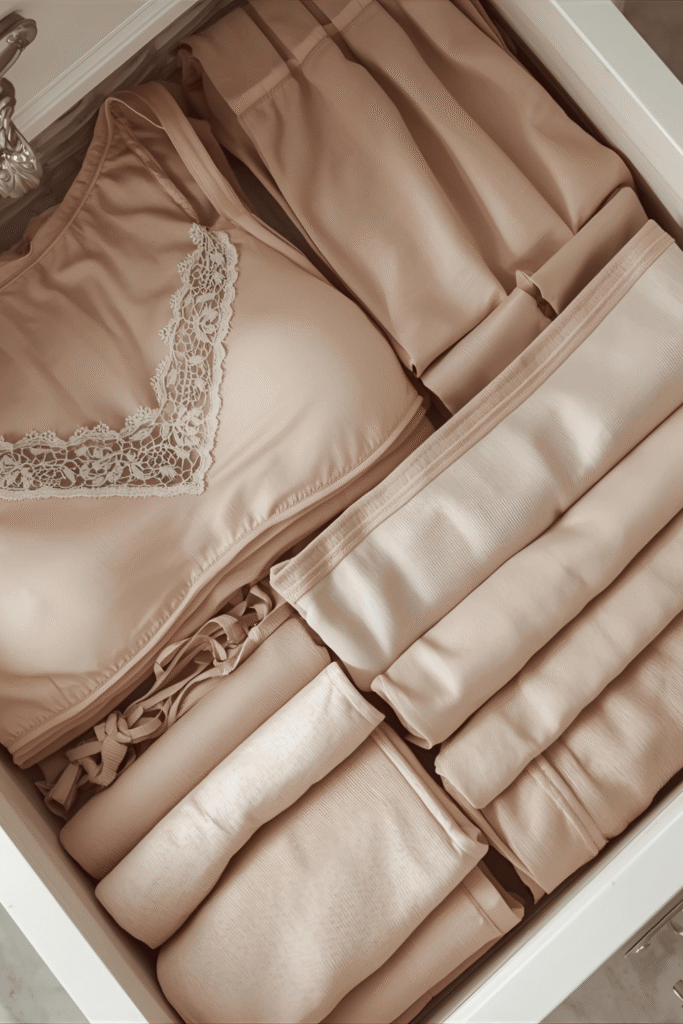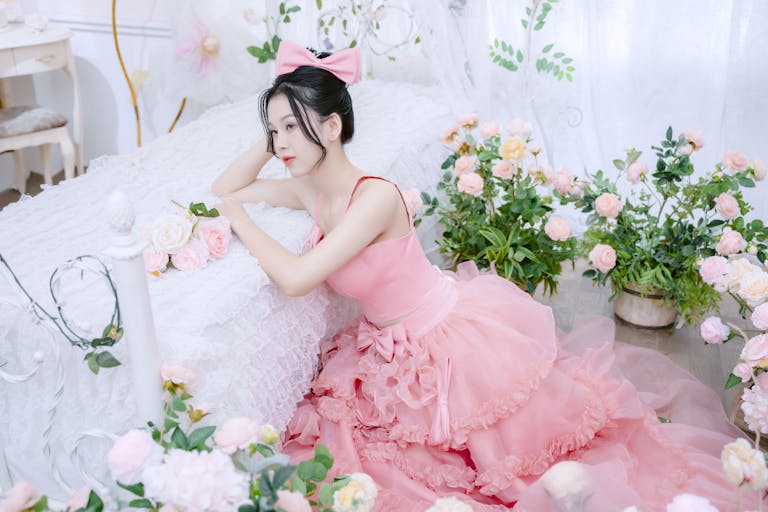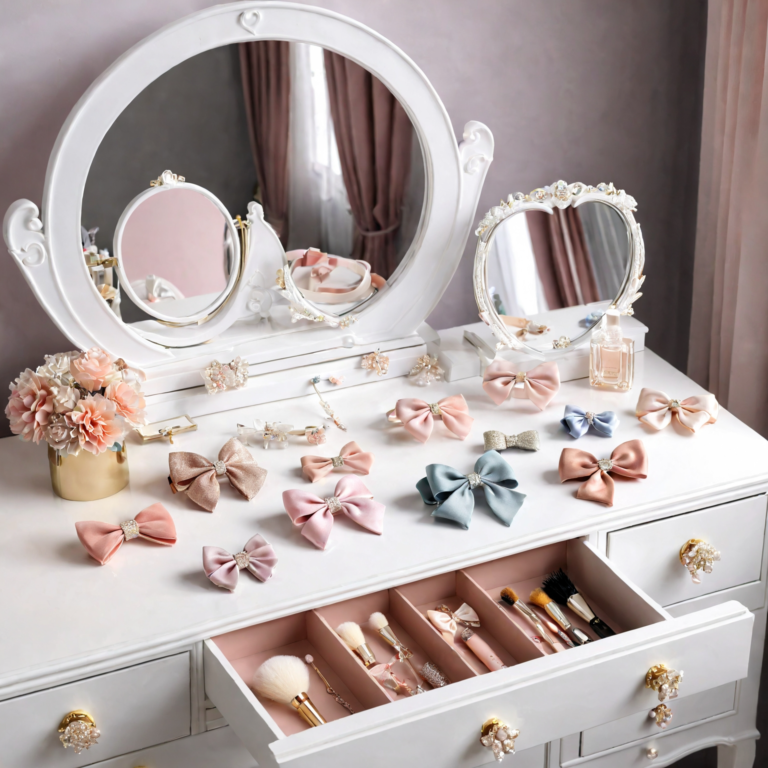Introduction: Dressing with Dignity
Navigating the landscape of fashion for teens and tweens can often feel overwhelming, as modern trends frequently prioritize fleeting visibility over lasting virtue. Yet, for the mother committed to Legacy Motherhood, this stage presents a profound teaching opportunity. Modesty is not a restrictive set of rules; it is a framework for dignity and self-respect—a joyful rejection of the culture of spectacle.
We believe that dressing with grace is an active part of Stewardship over the body and a demonstration of respect for others. By teaching our daughters to prioritize covering, quality, and poise, we guide them toward a timeless style marked by understated elegance. This post will explore why we dress, how to set proper foundations, and why true modesty must always begin as a matter of the heart.
I. Modesty: The Heart of the Matter
Before we discuss hemlines or necklines, we must first address the inner disposition. Modesty is a virtue of the heart before it is a garment on the body. It flows from a deep, quiet respect for oneself and a humble acknowledgment that our value is derived from our identity in Christ, not from the attention our appearance garners.
The goal of teaching modesty is not to hide beauty, but to cultivate a character marked by understated elegance and gentle confidence. This approach frees our daughters from the impossible pressure of using their bodies to seek validation. As mothers, we employ gentle guidance to help them understand that true beauty radiates from a spirit that is secure, focused on good works, and intentional about protecting its dignity. God sees our rebellious heart that is outwardly compliant but inwardly on full display. When the heart is set on reverence, clothing choices become a natural outflow of that inner stewardship.
But the LORD said unto Samuel, Look not on his countenance, or on the height of his stature; because I have refused him: for the LORD seeth not as man seeth; for man looketh on the outward appearance, but the LORD looketh on the heart. - I Samuel 26:7

II. Why We Dress: A Biblical Framework
In modern culture, dress is often championed as the primary—and sometimes only—avenue for freedom and self-expression. While personal style certainly has its place, this modern narrative distracts from the deeper, foundational reasons we wear clothes, which are rooted in dignity and community. We dress for three primary purposes:
1. Covering and Protection
The most ancient reason for clothing is to provide covering and protection. Clothing separates the private sphere from the public, providing dignity and acknowledging the sanctity of the body. This is a primary act of self-respect and stewardship. Skin exposed to the elements can rapidly become a source of damage, injury, or infection.
2. To Show Association (Identity)
Our attire signals our identity, allegiance, and values. By choosing clothing that is respectable, modest, and enduring, we are signaling our association with a set of traditional values—that we belong to a family and a faith rooted in quiet dignity and virtue. We are teaching our daughters to dress as a reflection of their inheritance in Christ. Whether for work or school, a uniform readily identifies the wearer.
3. To Show Respect (Self and Others)
Dressing well is an act of love. It shows respect for ourselves by honoring the body God created, refusing to treat it as a spectacle for public consumption. It also shows respect for others by ensuring we do not cause distraction or temptation. It would certainly be disrespectful to wear swimwear to a restaurant or a bright pink dress to a funeral. True elegance lies in making a careful, intentional choice to contribute to the purity and reverence of the environment.

III. Proper Foundations: Modesty from the Inside Out
A key element in building a truly modest and well-put-together wardrobe—and a lesson in self-respect—is the choice of proper foundations or undergarments. This layer is the bedrock of understated elegance, ensuring that the outer clothing can be worn with dignity and polish.
As our teens and tweens grow, teaching them to invest in and wear properly fitted pieces—bras, camisoles, and slips—is a critical act of gentle guidance and self-care. A glance at her backside should never reveal to all her personal choice in panty style.
Fit and Quality: Emphasize quality and fit over trend. A young woman who knows how to select and wear comfortable, supportive foundations is learning to exercise stewardship over her physical self, contributing to her overall quiet confidence and poise. She should never worry about an impending wardrobe malfunction that would leave nothing to the imagination for all who witnessed it.
Slips and Camisoles: These are the essential tools of modesty. They eliminate the issue of sheer fabrics, prevent cling, and provide smooth lines, instantly upgrading the look of an outfit. They are not outdated pieces; they are tools of industry and care that ensure a refined appearance. Modern shapewear pieces are literally a godsend for achieving a contoured silhouette where none exists.

IV. The Pursuit of Timelessness: Modesty vs. The ‘Fashionable’ Lie
The pressure on teens and tweens to be “fashionable” is immense, driven by social media and trends designed to make them feel perpetually behind. This desire to be “in style” often conflicts directly with the foundational principles of dignity and understated elegance, which value endurance over immediacy.
We must gently guide our daughters to understand that true style is timeless, not trendy. The concept of “fashionable” is often a cultural trap—a manufactured cycle of obsolescence designed to encourage consumption rather than stewardship.
Redefining Style as Stewardship
When we reject the chase of fleeting trends, we gain freedom and clarity in three key areas, linking our style choices back to our biblical values:
- Stewardship of Resources: Legacy Motherhood teaches us to invest in quality over quantity. Modest fashion, when done intentionally, focuses on classic, well-made pieces (simple skirts, tailored shirts, quality knitwear) that maintain their structure and charm year after year. This is responsible stewardship of the family’s finances and resources, rejecting the disposable nature of fast fashion.
- Stewardship of Attention: When a girl is not preoccupied with what is new or trending, she is freed to focus on what is true. Her attention shifts from external validation to internal character, cultivating the quiet dignity that defines understated elegance. Modesty ensures the focus remains on her face, her conversation, and her demeanor, not the fleeting details of her attire.
- The Enduring Wardrobe: Encourage your daughter to build a personal uniform based on classic silhouettes—looks that honor her dignity and maintain their appeal across decades. The goal is to create a style that is respectable and beautiful regardless of the current season. This choice is a reflection of her Legacy of Learning—valuing what is enduring over what is fleeting.
By embracing a focus on quality, fit, and classic design, we teach our daughters that their clothing should serve their virtue and dignity, not the ever-changing demands of the market.

Conclusion: The Quiet Witness
The journey of teaching our daughters to dress with dignity and modesty is a profound act of Legacy Motherhood. It moves beyond mere rules or passing trends to instill a deep-seated respect for themselves and a recognition of their precious worth in the eyes of their Creator. When a young woman chooses to dress with intention—embracing proper foundations, classic silhouettes, and an air of understated elegance—she is making a quiet yet powerful statement to a world often lost in noise.
Her attire becomes a gentle witness to a different way of living: a life rooted in humility, reverence, and stewardship over the body and resources God has provided. This is not about hiding her light, but about directing it wisely, illuminating character and grace rather than fleeting display. As mothers, our consistent guidance and the choices we model in our own lives lay the foundation for her future confidence.
May we raise daughters who understand that true freedom and self-expression are found not in conforming to every cultural whim, but in walking faithfully and beautifully in the path of truth.




